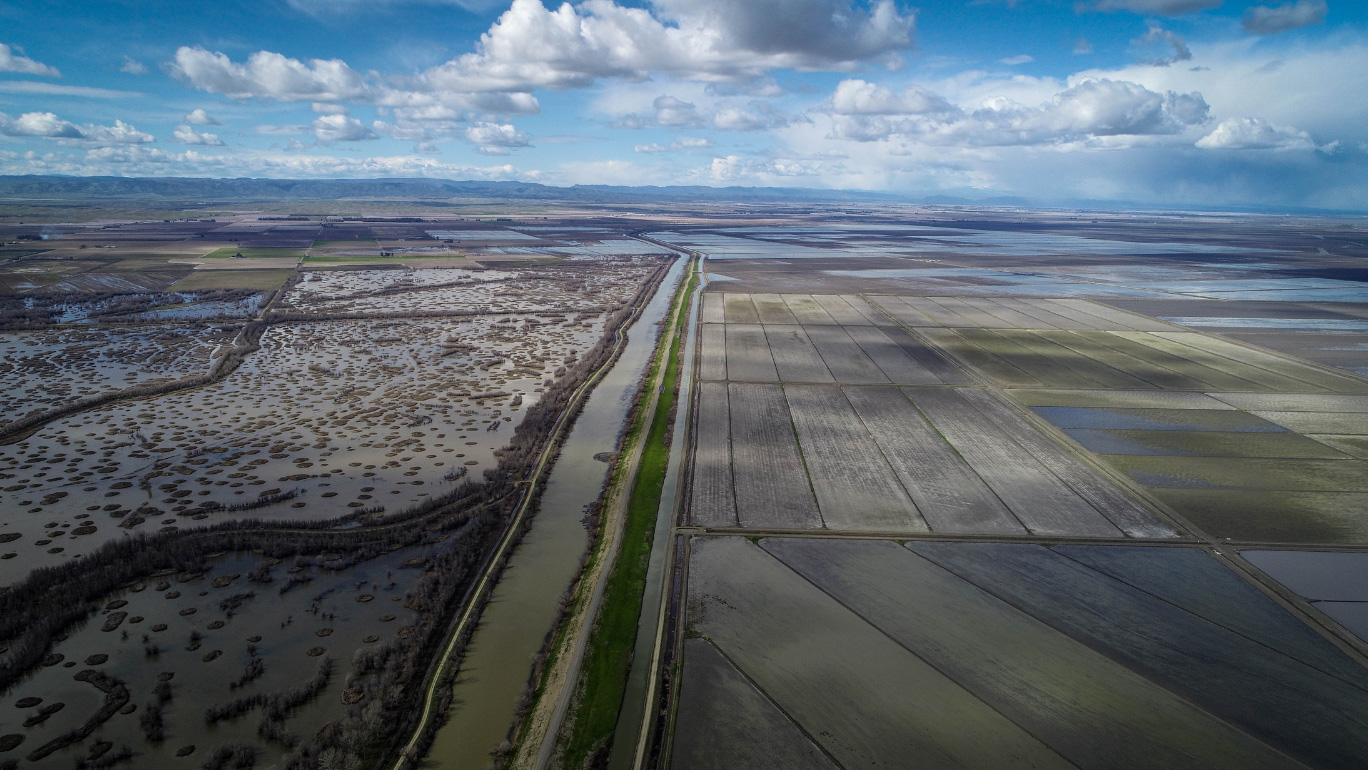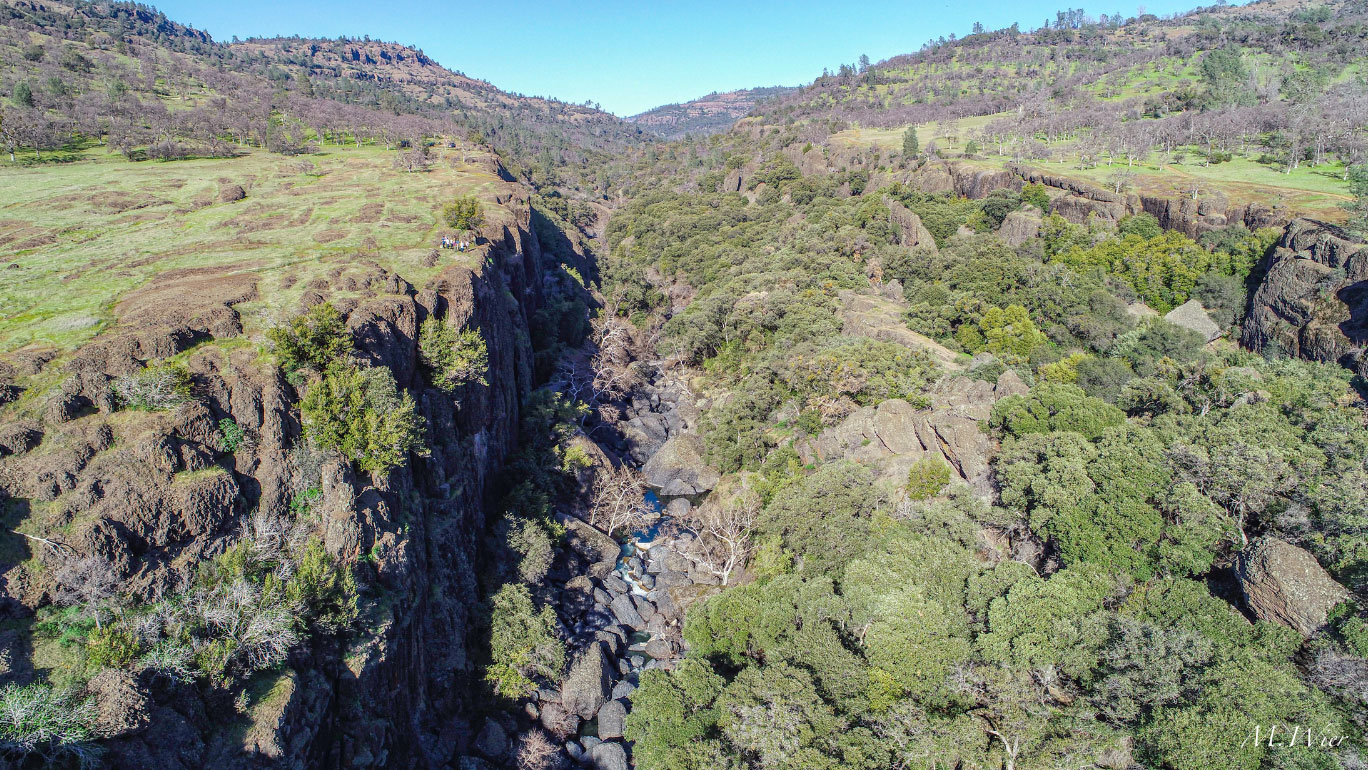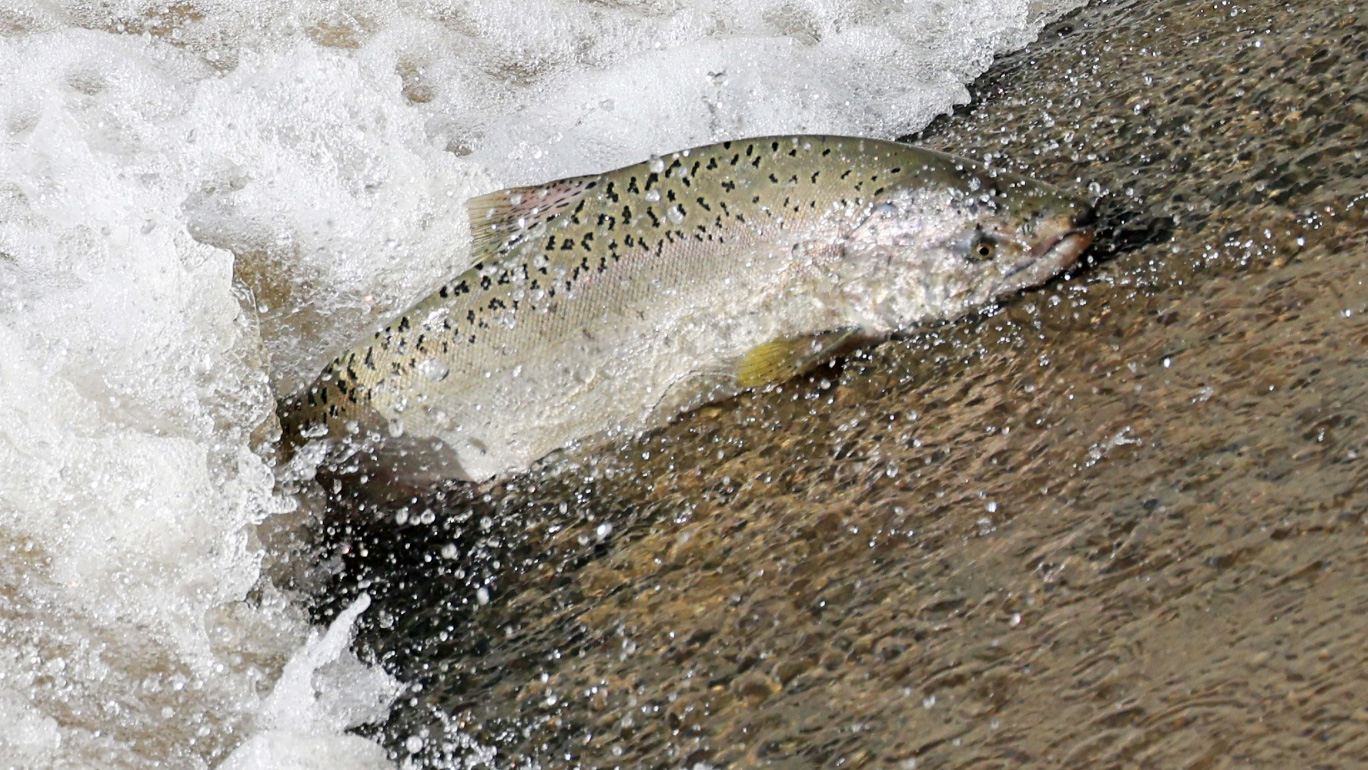Native fish across California are consistently vulnerable to safe and responsible operation of hydroelectric infrastructure such as dams and canals. In some cases, basins like Butte Creek are managed by water-moving infrastructure, guiding flows from the nearby Feather River watershed to Butte Creek. When functioning properly, this inter-basin transfer provides cold-water to Butte Creek and actually improves conditions for fish, like spring-run Chinook salmon, that rely on good water quality throughout the summer. Across the state, fish, wildlife, and people are dependent on this infrastructure for habitat, drinking water, and electricity – but at times, as witnessed on August 10, infrastructure fails.
Even with proper infrastructure maintenance and management, risks exist. As climate changes intensifies our weather patterns, floods, fires, and drought heighten the pressure on our ability to operate infrastructure safely. Fires make it hard to access and operate equipment. Deluges of rain put pressure on systems not accustomed to high flows. Drought forces us to transfer water between systems that previously self-sustained. And none of this infrastructure is getting any younger. With aging equipment no longer meeting its original objectives the risk of failure continues to rise.
But what would happen if we took a step back and let our watersheds return to their natural state? Years ago, the Sacramento River and its tributaries meandered towards San Francisco Bay on its own, absent of dams, canals, and any man-made manipulations. With modern day infrastructure in place, anadromous fish have lost access to essentially all of their historical spawning habitat in the Central Valley. Evidence continues to grow in support of nature-based solutions for recovery of these species, which in many cases can be superior to our man-made concrete efforts to constrain and control our rivers and streams.

Butte Creek flows orange after a mudslide caused by a breached canal. Credit: He-Lo Ramirez
Nature-Based Solutions in California
Nature-based solutions are design, management, or engineering practices that mimic natural features or processes to promote adaptation and resilience in the environment. These solutions help us harness the power of nature to address pressing environmental and societal challenges.
In the Sacramento Valley, hundreds of levees were built years ago to control flooding. This man-made solution has enabled communities to settle in areas they may not have been able to otherwise. However, these communities are incredibly vulnerable to proper levy maintenance and management. TIn January 2023, residents in Wilton were told to seek higher ground after record rainfall led to an aging levee failing on the Consumnes River. During the winter of 1996-1997, a similar intense storm led to levee failure, killing eight people and costing billions of dollars in damages.
If the Sacramento Valley’s historic floodplains could be reactivated, they could serve as natural solution to flood control without the vulnerabilities of concrete infrastructure, while also providing many benefits to fish and other wildlife. Floodplains provide habitat for bugs to grow which in turn provides food for fish and birds.

Nature's engineer, the beaver, can provide a nature-based solution to some of California's rivers' woes.
Butte Creek Hydrolectric Infrastructure Gives and Takes
Butte Creek, which flows into the larger Sacramento River watershed east of Chico, is heavily impacted by hydroelectric infrastructure. In this creek alone, roughly 20 miles of canals and two dams divert water throughout the system. The creek is also home to the largest population of wild spring-run Chinook salmon in California. Deep pools provide habitat for these fish as they wait out the spring and summer months before spawning in the fall.
Sediment in a stream is natural, but if sediment levels get too high, like they are currently at Butte Creek, it can be extremely dangerous for fish and other wildlife. Sediment blocks light that allows algae to grow, harms fish gills, fills or blocks important habitats, and stops fish from seeing well enough to move around or feed.
On August 10, a hole at the bottom of the Butte Canal wall, owned and operated by utility Pacific Gas & Electric, caused a water leak. Water leaked out of the canal, running downhill and collecting soil as it went in a large mudslide. This resulted in a surge of sediment into Butte Creek where spring-run Chinook salmon were holding in pools downstream.
In cloudy, sediment-choked waters, it’s hard to see below the surface to assess the toll this event is taking on the salmon holding in Butte Creek. Until the creek flushes out, information about fish mortality and other impacts to wildlife will remain murky. But spring-run Chinook salmon are particularly vulnerable at this stage in their life history. They have entered Butte Creek in the spring, and have been holding in pools since without feeding, living off of the reserves they created during their life at sea months before. Filling these pools with sediment makes a vulnerable life stage even more so. And how long it will take for the sediment to flush out is also unknown. As of this article's publication, there is still a large mass of mud in the creek where the canal breach occurred.
This is not the first time salmon in Butte Creek have experienced inhospitable conditions. In October 2021, an inter-basin transfer of water between the Feather River and Butte Creek was cut off, contributing to the largest fish kill of spring-run Chinook salmon in California. Before the cut-off, managed flows from the Feather to Butte Creek were much higher than normal, resulting in an artificially high amount of water in the creek. Because there was more water, salmon migrated into the watershed in large numbers, packing themselves into pools in extremely tight quarters, creating prime conditions for disease outbreak. When the transfer cut off, there was no longer an influx of cold water into Butte Creek, and water temperatures spiked. Hot water and disease killed 91% of the 21,000 salmon in Butte Creek. The death toll: 19,773 salmon dead.
Watersheds across California are threatened by a long history of problems related to hydroelectric infrastructure, resulting in major impacts to native fish. Further investigation into the current Butte Creek incident is essential so that infrastructure operators can understand what happened and prevent future incidents.

An aerial view of Butte Creek reveals a large mass of mud in the creek.
A Movement Away From Infrastructure at Battle Creek and Beyond
In Battle Creek, another tributary to the Sacramento River, 11 diversion dams, 35 miles of canals, and 2 reservoirs disrupt the creek’s natural flow. The construction of the Battle Creek Hydroelectric Project virtually eliminated access to 42 miles of anadromous habitat as well as connectivity for resident fish populations. Today, the project is no longer economically profitable for electricity generation. PG&E’s license to operate the project expires in 2026, and removal of all dams that block fish passage is on the table.
Removal of several fish passage barriers is already underway through the Battle Creek Salmon and Steelhead Restoration Project, which indicates high likelihood of completely restoring anadromous fish access to the area. The first dam removal occurred in 2010 with the removal of Wildcat Dam on the North Fork which opened miles of fish habitat. CalTrout’s recently completed Eagle Canyon fish passage project was another step forward opening over 8 miles of habitat. Efforts are now in progress to initiate the removal of all dams on the South Fork as well as provide passage beyond the remaining North Fork dams. With PG&E’s announcement to surrender their hydroelectric license, the potential for complete dam removal is promising.
Beyond Battle Creek, hydroelectric infrastructure is being investigated for viability across the nation. On the Klamath River, the world’s largest dam removal project has commenced. A few years ago, the Elwha dam came out. Soon, the Eel River dams will join their ranks. Since 1912, over 2,000 dams have been removed across the United States. In 2022 alone, 65 dams came out. Again and again, scientists, restoration practitioners, and policymakers are finding that more man-made infrastructure is not always the answer. This most recent incident in Butte Creek begs the question of whether there might be another answer for this watershed, perhaps a more natural one.







